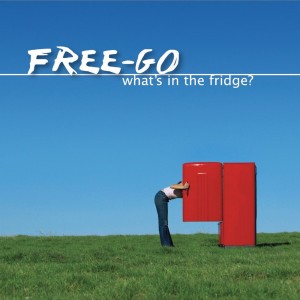Ernst Bertone and two fellow University of California, Davis graduate students began their experiment last fall with a simple idea: Build a closer community and reduce food waste by sharing food with their neighbors. They placed a community refrigerator on their lawn, called the project “free.go” and watched it take off.
 Neighbors and fellow students picked up and dropped off dozens of food items at the front yard fridge, following free.go’s mantra: “Take what you need. Leave what you don’t.” More than 100 items were exchanged in a month’s time outside Bertone and Eric Yen’s Douglas Avenue home last September.
Neighbors and fellow students picked up and dropped off dozens of food items at the front yard fridge, following free.go’s mantra: “Take what you need. Leave what you don’t.” More than 100 items were exchanged in a month’s time outside Bertone and Eric Yen’s Douglas Avenue home last September.
By the end of the month, neighbors were sharing books, too, and another exchange was born.
“It worked exactly as it was supposed to. … People took (the food) and it worked. People took it and used it,” said Bertone, a graduate teaching assistant in UC Davis’ agriculture and resource economics department.
But the food sharing project quickly ran afoul of state health and safety codes and was unplugged late last year by Yolo County health officials amid food safety concerns. Bertone and friends, however, refuse to call free.go a failed experiment. Rather, they hope it will launch a broader conversation on the notion of food sharing in the city, including other “fridge sharing mechanisms,” as Bertone calls them, and its connection to an emerging “sharing economy.”
Bertone, Yen and Ali Hill, another UC Davis graduate student, plan to lobby Davis city leaders. They want to plead their case for food sharing and community refrigerators at a future City Council meeting. The idea has already spawned lively debate in community websites such as People’s Vanguard of Davis and drawn about 130 signers to an online petition that the trio plan to submit to the city.
“The fridge is a great idea even aside from (reducing) food waste,” Hill said. “It encourages a great sense of community that’s lacking in most communities. This is kind of a cool way to encourage it.”
But there are practical concerns, with food safety at the top of the list.
“I think the spirit is in the right place and the thought of not wasting food is good, but with the (health) issue, you balance progressive thinking with the fact there’s no control over it,” said neighbor Robert Weidenfeld. He suggested working with local food banks and other relief groups.
“I had no problem with it being out there and they’ll probably say that it’s a good idea, but maybe their energies would be best put toward groups that are shown to be effective,” he added.
Yolo County health officials who red-tagged the refrigerator as an illegal food facility back in November determined that because the free.go refrigerator was an unregulated food exchange, Bertone could not guarantee the food inside was safe to eat.
“He’s started a food business. The food’s not from an approved source. He can’t guarantee its safety. There are so many unknowns that there is a high risk to the public,” said April Meneghetti, a Yolo County environmental health specialist.
Meneghetti said the potential health risks are many: contamination; exposure to foodborne illnesses; unintentional exposure to those with food allergies and compromised immune systems; and the risk of eating recalled foods.
“It may not be anything malicious, but the food code is based on potential risk,” Meneghetti said. “If it’s completely unregulated, it’s too risky. There’s no way to trace back the food if someone got sick.”
